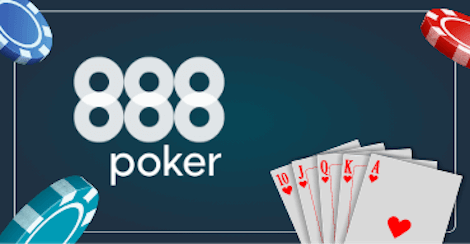If you’re not a passionate player on one of the many excellent poker sites yourself, you might have been confused when you overheard poker players talking about getting 3:1 on a call or facing a shove and getting 1.5:1 on their stack. If you were puzzled and want to know more, or would like to amp up your game, you’ve come to the right place.
We’ll help you better understand pot odds and calculate them with ease. Knowing the odds, statistics, and probability behind the hand you play can boost your chances of winning. That’s why skipping math classes back at school wasn’t a good idea – math skills are crucial for poker success.
Let’s dive deeper and explain how to make and use odds calculations to beat your opponent.
Let’s Start From Scratch
The odds in poker represent a math concept that expresses the ratio of risk and reward. The numbers we talked about in the introduction represent the proportion between the total pot size and the bet facing you. These figures expressed as ratios are called poker pot odds, and employing them can be a game-changer. The number on the right side represents how much money you’re risking, and the one on the left is your potential reward.
Here’s a simple example: In a game where your opponent bets one chip, and there’s one chip on the table, you’d have to stake one chip in order to continue. That means that you’re risking one chip for the original one-chip pot, plus your opponent’s one-chip bet. That is, you’re risking one unit to win two units, and the equation would be 2:1.
Let’s Calculate
Now that we have pot odds explained and hopefully understood, let’s dive deeper into how to work them out in-game.
Counting the Pots:
First of all, keep in mind that the size of the pot depends on the poker variant you’re playing. It can make a huge difference: If you’re playing Texas Hold ’em, and the bets double, you should count the big bets as two small bets. In Limit poker, for example, instead of calculating the amount of money, you should count the number of bets in the pot. Counting the pot in Pot-Limit or No-Limit is a bit difficult, and you probably won’t get the exact odds, but you should still try to get close.
Final Pot
There are some rules of thumb to help you out when calculating pot odds. First, you need to figure out the size of the pot if you were to call. In an example match with a $100 pot and your opponent’s bet of $50, the total bet is $150. That means that in this situation, the odds are 3 to 1 (3:1). With $50 to call, should you decide to call, the final pot would be $150 plus $50 = $200.
Do the Math
Now, divide the size of your call by the size of the final pot. In our example, the number we get after dividing $50 by $200 is 0.25. To convert the decimal you got as a result into a percentage, simply multiply it by 100. Here’s the pot odds formula: the number you get, 25, indicates that you have to win more than 25% of the time if you want to profit.
How About Equity?
The next step after working out the pot odds is working out your card equity. Players estimate their equity by calculating their chances of getting the card they need, in percentages. First, you need to know what percentage of the deck is your “outs,” i.e., cards you can use to complete your hand.
The formula goes like this: Double the number of outs and add one. For example, let’s calculate your poker odds if you have a diamond nine and a spade seven and want to make a straight draw. In this situation, there are eight outs needed to complete the straight – four fives and four tens.
8 * 2 = 16
16 + 1 = 17
That means that you have a 17% chance of making a straight. If your pot odds are higher than your equity, you should fold.
You can also compare your equity to your opponent’s range. The opponent’s range is all the possible hands they might have at the moment of decision-making. In our example case, we should see whether our specific hand will have at least 25% equity compared to the opponent’s range.
In the pre-flop stage, you can use different tables or a pot odds chart found online to figure out a person’s range. Then, you can employ one of the many equity calculator platforms and input the range and your hand to get your equity. If it’s lower than your pot odds, you should fold, or you will lose money if you call. If the equity is higher, keep playing.
How to Use Figures
If you consider yourself a “feel player” and don’t want to get involved with numbers, percentages, and poker math in general, we hope we managed to prove you wrong. Poker pot odds are your friends, and if you want to make good calls and win, you should learn how to work them out, or at least use a simple online calculator.
Use the methods we explained and connect the odds to the value of your hand to understand your chances of making a better hand than your opponents. Basing your drawing decisions on maths can make all the difference.
Also, you’ll know exactly how much you should bet to protect your hand. Take your old math notebooks and review the lessons you skipped at school, and you might start earning money.
More Poker Knowledge:
FAQ
How to calculate pot odds?
The easiest way is to use one of the many calculators available online. Another one is to do the math. Simply divide the size of your call by the total size of the pot. If you want to turn it into a percentage, multiply the number you get by 100 – et voila!
How do you use odds and equity?
Once you calculate your pot odds and equity, you should compare them. If the equity is higher of the two, then you should call a bet. If it’s lower, then you should fold, or you’ll end up losing more money.
How are implied pot odds calculated?
Implied odds represent the ratio between the size of the current pot and the pot you hope to win. It is the amount of money you anticipate to win on future streets. If you expect to win more money after hitting your hand, your implied odds are good. On the other hand, expecting not to get more money in the following streets means that you have little or no implied odds.
What are good pot odds?
Good odds in poker are those that are greater than the odds against making a winning hand. It is represented by numbers where the number on the left is the risk, and the one on the left is the reward you can get. If the reward is higher than the figures representing the risk, it’s time to call a bet.





